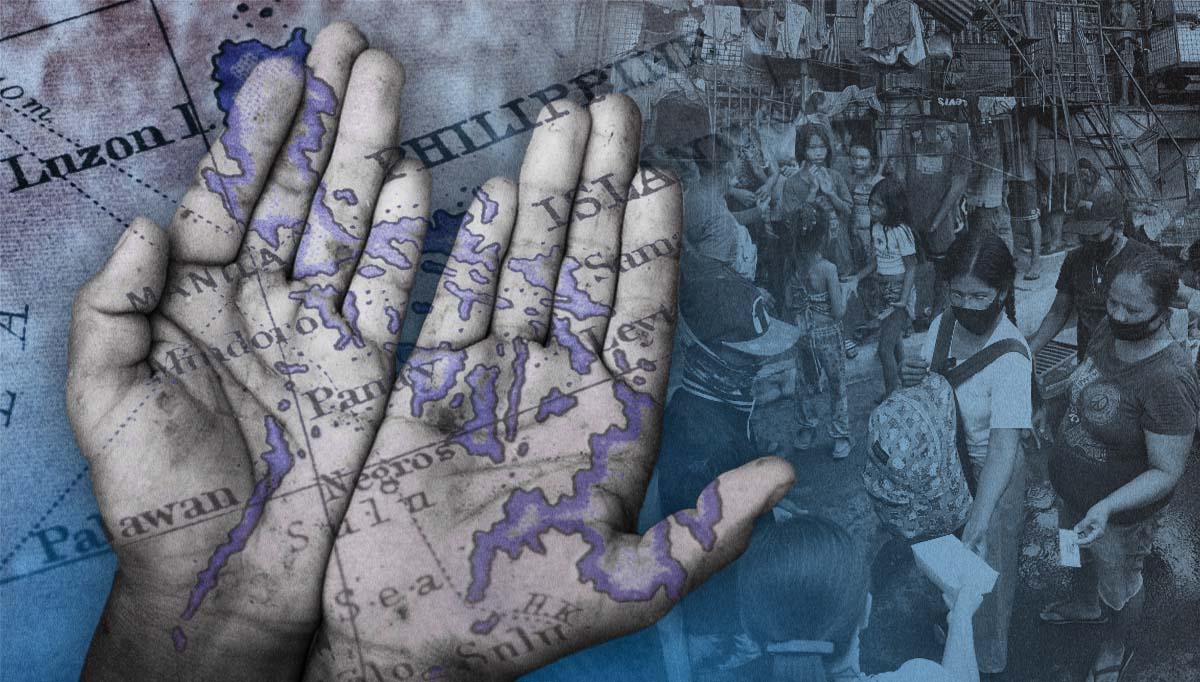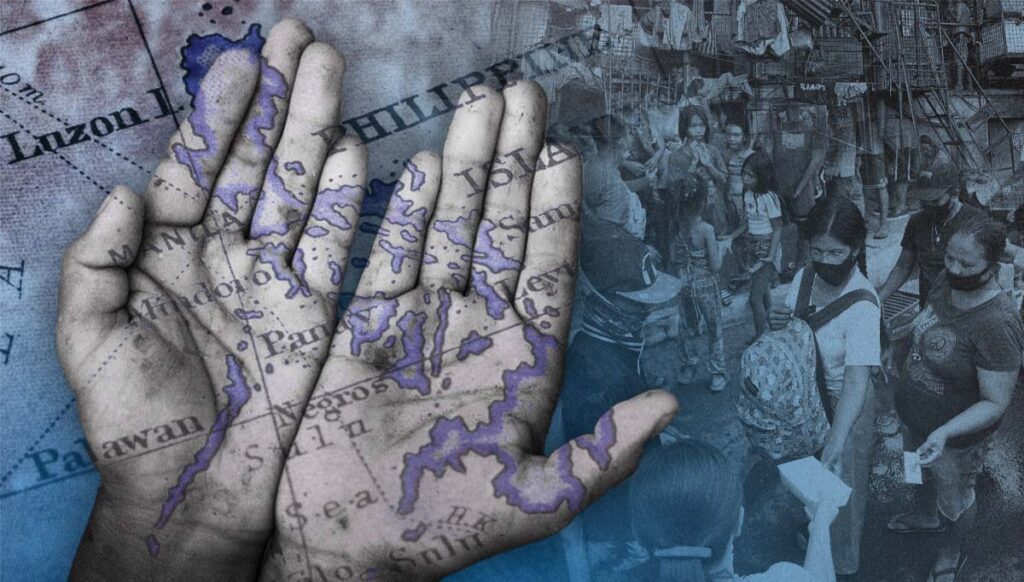
POVERTY composite image from file photos
The Philippine Statistic Authority (PSA) said that a Filipino family of five members only needed nearly P14,000 per month to meet their minimum basic food and nonfood requirements last year.
In its 2023 official poverty statistics, the PSA noted that a five-member family can be considered “not poor” if their minimum basic food and nonfood expenses were not less than or below P13,873 per month.
The amount is already an improvement from the P11,998 monthly in 2021.
READ: Pinoys spending over P64 for meals a day not food poor – Neda data
According to the country’s statistics agency, however, the poverty threshold differs in every region of the country since bills and expenses also vary.
Hence, the poverty threshold for the National Capital Region (NCR) or Metro Manila was at P15,713 while Region 3 (Central Luzon) and Region I4-A (Calabarzon) were at P16,046 and P15,457, respectively, last year.
The region that posted the lowest poverty threshold was Region 12 (Soccsksargen) at P12,241.
READ: P64 food budget per day not enough according to PSA
The PSA further reported that the national poverty incidence among families in 2023 was recorded at 10.9 percent – which is equivalent to 2.99 million Filipino families without enough income to meet their basic food and non-food needs.
Food poverty threshold
In a briefing Friday, the PSA likewise admitted that the food poverty threshold of P63.87 per person a day is “insufficient.”
It said it will review the methodology for calculating poverty and food thresholds next year. The scheduled adjustment was initially planned for 2021 but was postponed due to the peak of the pandemic.
READ: Inflation rate in Cebu: Your P1 is now worth 83 centavos
“It’s really insufficient but [the way] we set up the food threshold and the poverty threshold is the minimum basic needs, so it’s the least cost,” National Statistician Claire Dennis Mapa said during the briefing.
According to the PSA, the food threshold for a family of five last year was P9,581, up by 14.7 percent from P8,353 per month in 2021.
This means that a person is not considered “food poor” – a person who is unable to consume adequate food – if he can spend more than P63.87 a day or a measly P21.3 every meal.
At the national level, this could mean that a breakfast typically includes a scrambled egg, coffee with milk, and rice or a rice-corn mix. Lunch consists of a cup of monggo with malunggay and dried dilis, a banana, and a serving of rice. And for dinner, a meal that usually features fried fish or boiled pork, a vegetable dish, and boiled rice while the snack could be a pandesal.
“First, let’s have a menu, what is typical that can produce energy, protein, calcium… those who prepare it are nutritionists, so they have a requirement on energy and nutrients after creating a food bundle for lunch, dinner, which can provide this requirement,” Mapa said.
Cheapest cost
In calculating the cost, the PSA chooses the cheapest cost of a specific item and it varies from different regions and provinces.
“I agree this is really basic. A lot of people will not be happy about it but that is how the bundle is arrived at. In other words, there is science to it,” he added.
On August 13, National Economic and Development Authority (Neda) chief Arsenio Balisacan said in a Senate hearing on the 2025 national budget that, “As of 2023, a monthly food threshold for a family of five is P9,581, that comes out [to] about P64 per person.”
His remarks were a reply to Sen. Nancy Binay’s query on how the country classifies food-poor Filipinos.
Various sectors hit Neda’s food poverty yardstick, with some calling it “infuriating and insulting.”
In July, the PSA said the country’s poverty rate declined to 15.5 percent in 2023 from 18.1 percent in 2021 as the average income of a Filipino increased.


